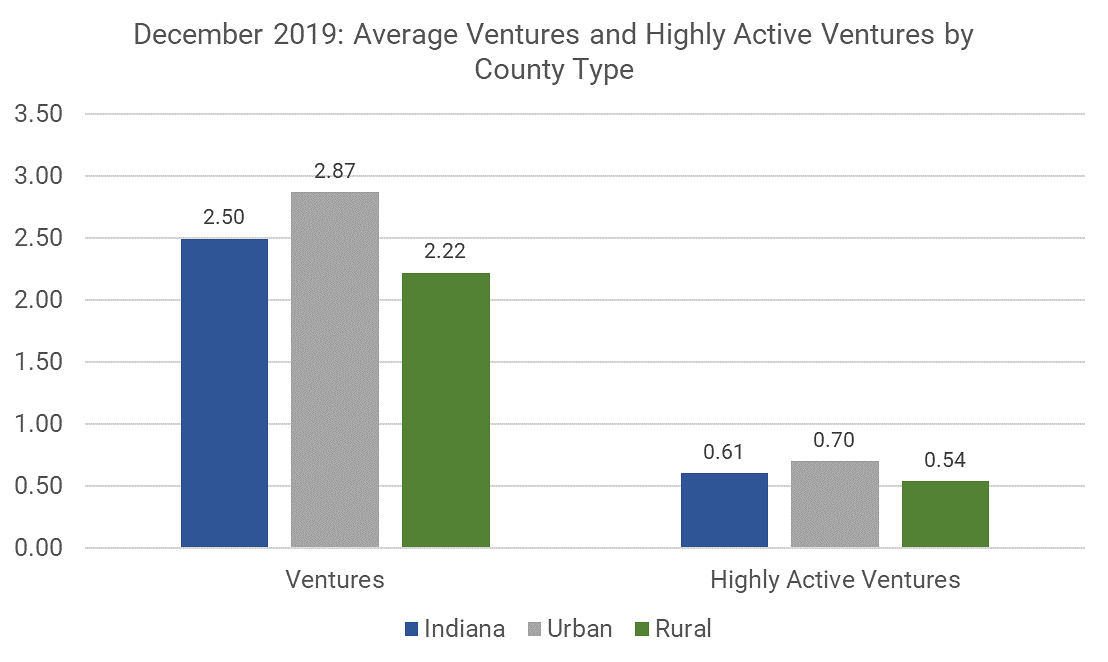Websites: Measuring Indiana’s Internet Use

In the past, we have discussed broadband access and availability. We try to provide the most up to date broadband footprint in the state of Indiana in an effort to inform and jumpstart critical conversations around this topic.
However, research shows that Internet adoption and use has a larger bang for the buck when compared to access, especially in rural areas. In other words, how the internet is used by residents, businesses, and communities in general has a larger impact on community and economic development.
Unfortunately, internet adoption and use data is hard to come by. The Census has started to publish a home internet access variable that gives us a better glimpse of adoption. On the other hand, local and regional Indiana surveys have also found interesting trends in regards to internet use.
Today, we look at a new variable that provides a deeper understanding of effective internet use in Indiana. Data comes from the web hosting service Go Daddy. GoDaddy is an online platform that allows users to design and publish websites by hosting (storing) the information and assigning a domain name (web address).
The Daily Yonder recently published a story about this dataset as well.
Data is at the county-level and includes density of ventures (websites and its redirects) per 100 residents. According to GoDaddy, more than two-thirds of these ventures were business websites. In addition, this data distinguishes between ventures and highly active ventures. Highly active ventures are older, had more information and were updated frequently, and had more traffic, both in and out links.
A key disclaimer before we dive into the data. GoDaddy has between 15 and 20% of the web hosting market share. So, this data set by no means includes all potential websites out there. Also, number of websites is one of many indicators of effective internet use.
So, what is the data telling us about Indiana counties?
Map shows the highly active ventures by county as of December 2019 divided into four groups: lowest, second lowest, second highest, and highest. The counties with the most highly active ventures per 100 residents were located in and around the Indianapolis metropolitan area. There are additional counties in the north and southeast of the state as well. Hover over a county to see more information.
To look at these numbers in a different light, the graph below shows the average of both venture densities by county type. Urban counties are those who had 50% or more of their population living in urban areas of the county. These sub-county urban areas are defined by the U.S. Census.
Overall, the average density of highly active ventures is much lower than the venture density. Also, urban counties had a higher average on both ventures and highly active ventures compared to rural counties. However, the difference was lower among highly active ventures (0.16) compared to ventures (0.65). In other words, it seems that rural counties are not that far behind urban when it comes to highly active website density.
In summary, not only does broadband infrastructure matter but also how it is used. This analysis looked at the number of websites or ventures per 100 residents in Indiana counties as a proxy to effective internet use.
A couple of implications are worth discussing. First, venture density in rural counties needs to improve. As the COVID public health crisis has made clear, an online presence is critical for any business to remain active in addition to ensuring these businesses can participate in this digital age. Second, the highly active venture density also needs to improve in both urban and rural areas of the state. This implies that some businesses may have outdated, incomplete websites, or their traffic is not at the level it should be.
Purdue Extension and the Purdue Center for Regional Development can help. Our Digital Ready Business program targets businesses and entrepreneurs that are at an entry-level when it comes to an online presence to help them understand and set up one.

Roberto Gallardo is the Vice President for Engagement, Director of the Purdue Center for Regional Development and an Associate Professor in the Agricultural Economics Department.... read more





